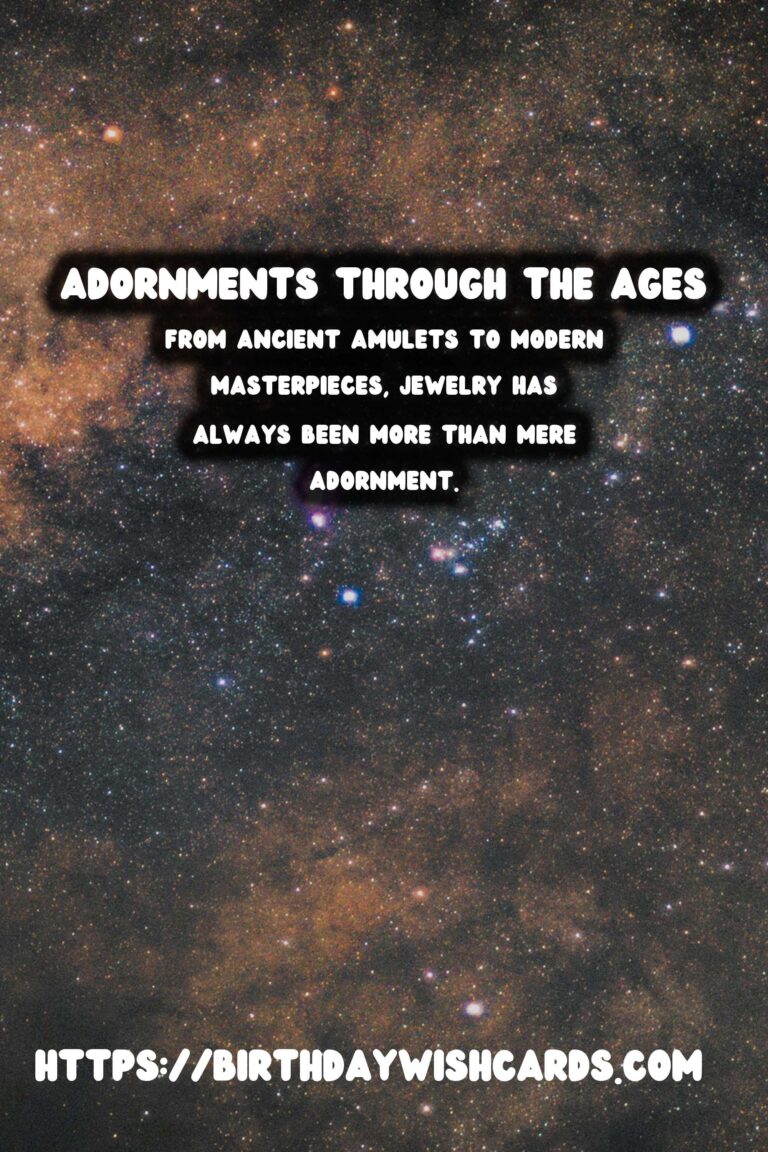
Jewelry has long been a significant aspect of human culture, representing status, beliefs, and artistic expression. Throughout history, jewelry has evolved, adapting to cultural shifts and technological advancements. In this article, we journey through the ages to explore the fascinating history of jewelry and its enduring allure.
Ancient Beginnings
Jewelry’s origins date back to ancient civilizations, where it was crafted from materials like shells, bones, and stones. These early adornments were not merely decorative; they often held spiritual significance. In ancient Egypt, jewelry was crafted from gold, stones, and metals, symbolizing power and religious faith. The Egyptians believed that jewelry offered protection and prosperity in the afterlife.
The Impact of the Middle Ages
During the Middle Ages, jewelry’s role expanded beyond the spiritual and personal. It became a significant indicator of social status. Nobility adorned themselves with intricate designs, while sumptuary laws restricted lower classes from wearing certain materials. This era saw the rise of new techniques, including enameling and the use of gemstones like rubies and sapphires.
The Renaissance: A Time of Innovation
The Renaissance brought about a renewed interest in art and culture, which heavily influenced jewelry design. With the discovery of new trade routes, an influx of exotic gemstones entered Europe. Goldsmiths gained prestige and craftsmanship reached new heights. Jewelry became elaborate, often featuring mythological themes and exquisite settings.
The Opulence of the Baroque Period
The Baroque period was characterized by grandeur and extravagance. Jewelry pieces from this time were large and colorful, reflecting the opulence of the era. Advances in cutting techniques allowed for intricate designs and enhanced the natural beauty of gemstones, leading to the development of ornate necklaces, earrings, and brooches.
The Victorian Era: Sentiment and Symbolism
The Victorian era, named after Queen Victoria, was marked by a strong sense of sentimentality in jewelry. Mourning jewelry, crafted from jet and onyx, rose in popularity following the queen’s prolonged mourning for her husband. Symbolism became crucial, with lockets and brooches often containing romantic motifs like hearts and flowers.
The Art Nouveau Movement
Emerging at the turn of the 20th century, the Art Nouveau movement embraced natural forms and flowing lines. Jewelry from this period often featured motifs inspired by nature, such as flowers and insects, crafted in materials like enamel and glass. This movement marked a shift towards unique, handcrafted pieces that showcased individual artistic expression.
The Roaring Twenties and Art Deco
The 1920s brought about the Art Deco movement, a stark contrast to the elegance of Art Nouveau. Characterized by geometric shapes and bold colors, Art Deco jewelry reflected the Jazz Age’s dynamic spirit and a newfound sense of freedom and prosperity after World War I. This era embraced modernity, influenced by advancements in technology and cultural fusion.
Modern and Contemporary Jewelry
In contemporary times, jewelry continues to evolve, embodying both tradition and innovation. The late 20th and early 21st centuries have seen the rise of sustainable and ethical practices within the industry, as well as the influence of technological advancements in design and production. Today, jewelry remains a multifaceted art form, cherished for its ability to convey personal stories and cultural heritage.
From ancient amulets to modern masterpieces, jewelry has always been more than mere adornment. It tells a story of humanity’s endless pursuit of beauty, identity, and expression. As we look to the future, jewelry continues to inspire, bridging the past with the present in a timeless dance of creativity and craftsmanship.
Jewelry has long been a significant aspect of human culture, representing status, beliefs, and artistic expression. From ancient amulets to modern masterpieces, jewelry has always been more than mere adornment.
#JewelryHistory #Adornment

